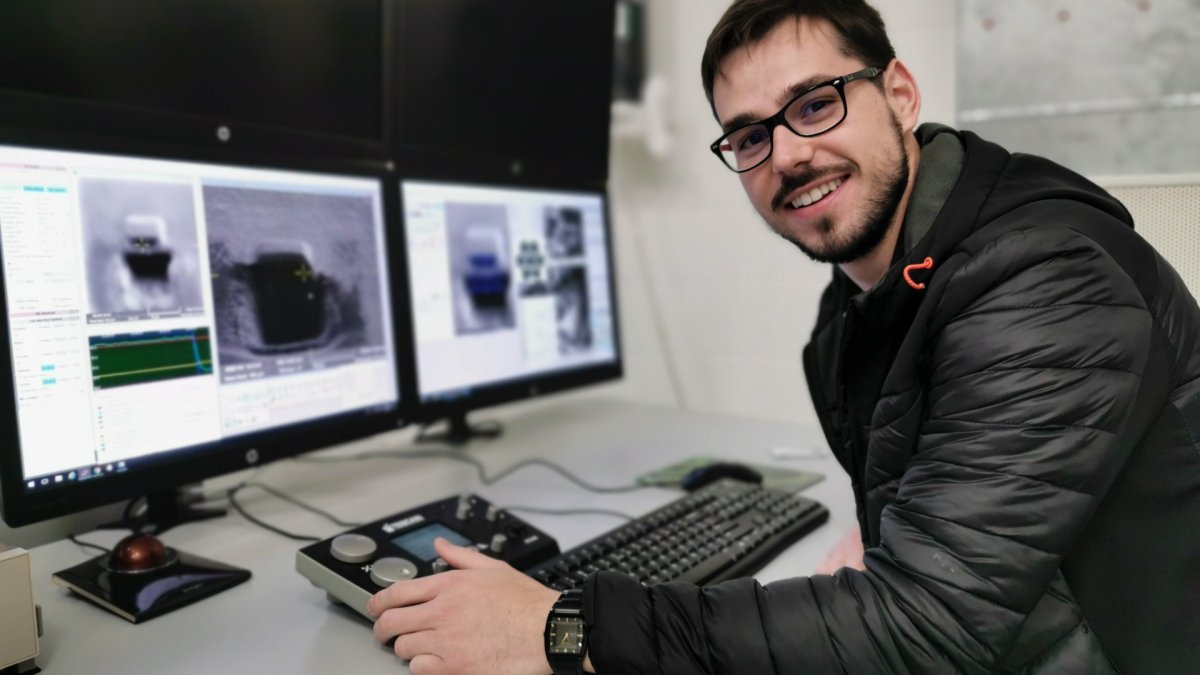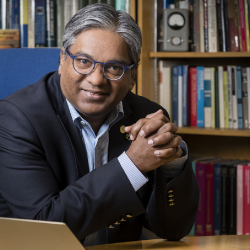Surrey PhD student publishes research on carbon nanotubes
One of our top PhD research students, Mateus Masteghin, 25, from our Advanced Technology Institute, is celebrating having his first research paper published in Applied Physics Letters, which reports on significant new findings in applied physics.

Mateus in the University of Surrey’s lab working with the Focused Ion Beam microscope
Mateus’ research proposes using Field Electron Emission as a complementary technique to assess carbon nanotube (CNT) quality. In a nutshell, his paper advances an alternative – and cheaper and less time-consuming method – that can be used to analyse the structural integrity of CNTs, a material one billionth of a centimetre in size.
“I was studying at Sao Paulo State University, Brazil, then I came to the University of Surrey on a studentship for 10 weeks in 2017 to conduct an experiment for my masters degree,” said Mateus.
The University has two key facilities – the Clean Room and the Focused Ion Beam (FIB) microscope – which helped Mateus’ research.
The Clean Room provides an environment free of particles to conduct experiments in an uncontaminated area, while the FIB microscope is used for analysing the structure, growth and erosion of materials at a minute level, and, in the present case, to nanofabricate devices.
“After visiting the Surrey campus, I went back to Brazil and completed my masters in June 2018. Then Dr David Cox, who taught me to use the Focused Ion Beam microscope, emailed me asking if I wanted to apply for a PhD at Surrey.”
Mateus successfully gained a University Research Studentship, which funded his PhD, and he returned to Surrey in October 2018.
The findings in Mateus’ paper could have far-reaching consequences as CNTs are used in the manufacture of transistors and sensors.
“A potential application would be CNT-based sensors. For example, it may help build wearable devices that can detect diabetes using a breath test. There are also other applications in transistors, smart phones and TVs.”
Professor Silva, Director of the Advanced Technology Institute and co-author of the paper, added: “The research published highlights the excellent collaborative work that can be done across international boundaries, with significant impact.
“The work helps to understand nano-scale microstructure in carbons, which is critical in manufacture and on standardisation of advanced materials.
“The alternative technique proposed to study microstructure based on electron field emission has come out of left field and it could lead to a multitude of new methodologies.”
To find out more about our PhDs and what Surrey has to offer, visit the Doctoral College.
